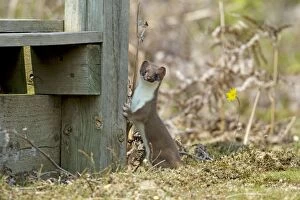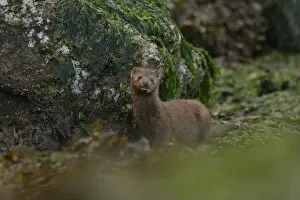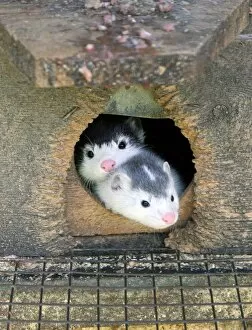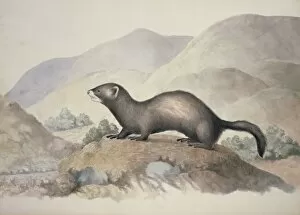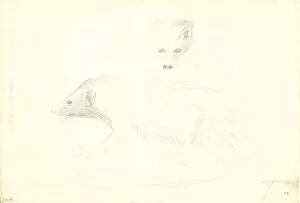Mustela Collection (#3)
The Mustela genus encompasses a diverse group of small carnivorous mammals, including the Mustela nivalis or least weasel
For sale as Licensed Images
Choose your image, Select your licence and Download the media
The Mustela genus encompasses a diverse group of small carnivorous mammals, including the Mustela nivalis or least weasel. In Sheffield, a curious weasel peeks out of its hole on the woodland floor, surrounded by delicate snowdrops. Meanwhile, an artwork depicting the Yellow-throated marten (C016 / 5897) showcases the beauty and allure of this elusive creature. Moving on to other members of the Mustela family, we encounter the formidable Honey badger (Mellivora capensis) and its close relative, the least ferret. These tenacious creatures are known for their fearless nature and impressive hunting skills. In Lucerne, Switzerland, a stoat dons its winter coat as it stands alert in a vast grassland. This sleek predator is perfectly adapted to blend into its surroundings during colder months. Similarly, in Mao Country's Jiudingshan Nature Reserve, a Siberian weasel confidently stands amidst pristine snowscapes. Creux du Van in Jura Suisse becomes home to another stoat that curiously observes its surroundings from a snowy hole. British Columbia offers us yet another glimpse into these fascinating animals as they navigate their way through white landscapes. The Mustela genus also includes various other species such as red pandas and bearcats - each possessing unique characteristics that make them stand out among their relatives. Lastly, Upper Bavaria presents us with an enchanting sight: a stoat standing upright in pure white snow wearing its stunning winter coat. It serves as a reminder of how these creatures have adapted to survive harsh European winters throughout history. From mustelids like weasels and ermines to polecats and martens - this captivating group never ceases to amaze with their resilience and adaptability across different habitats worldwide.


